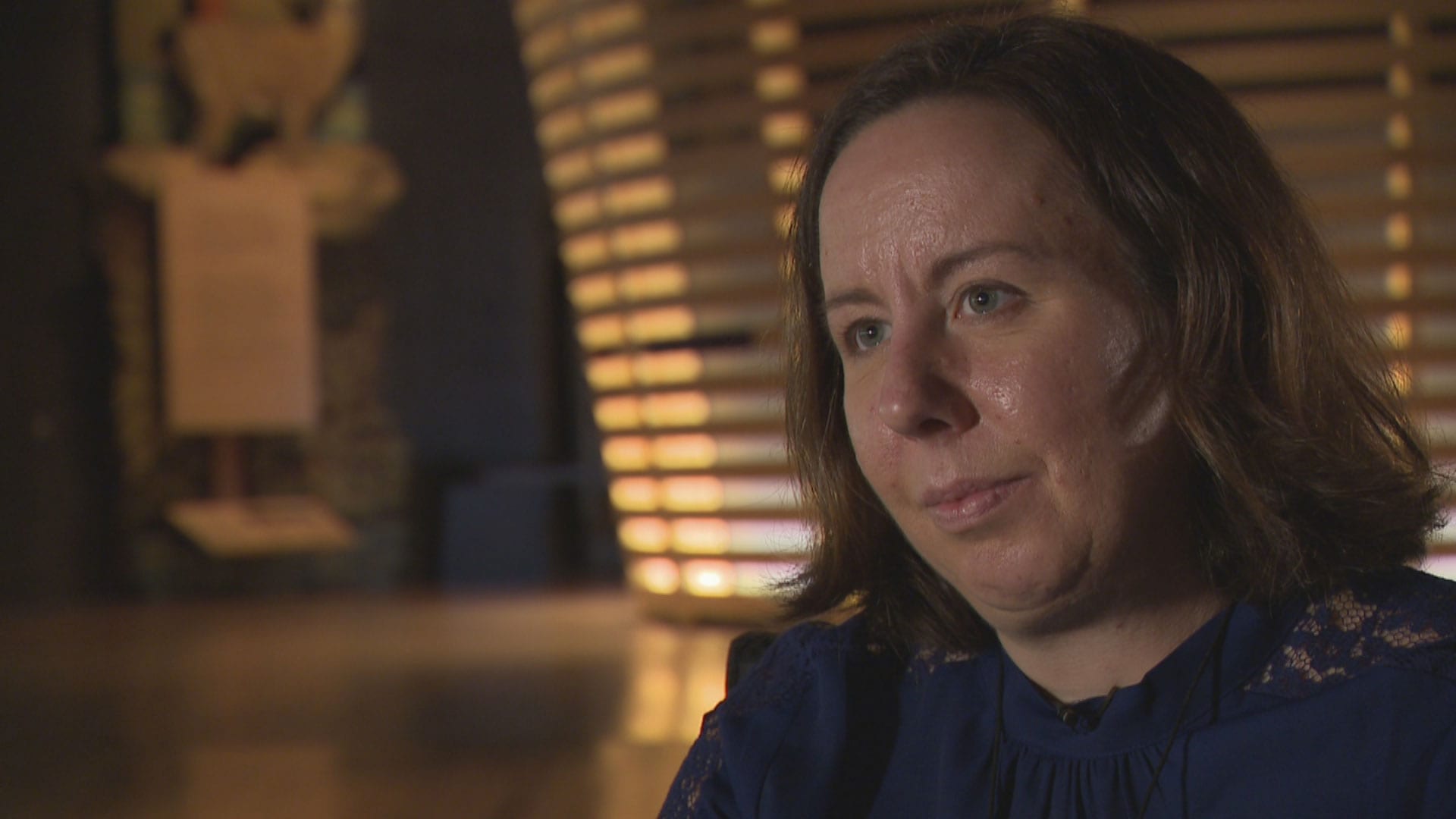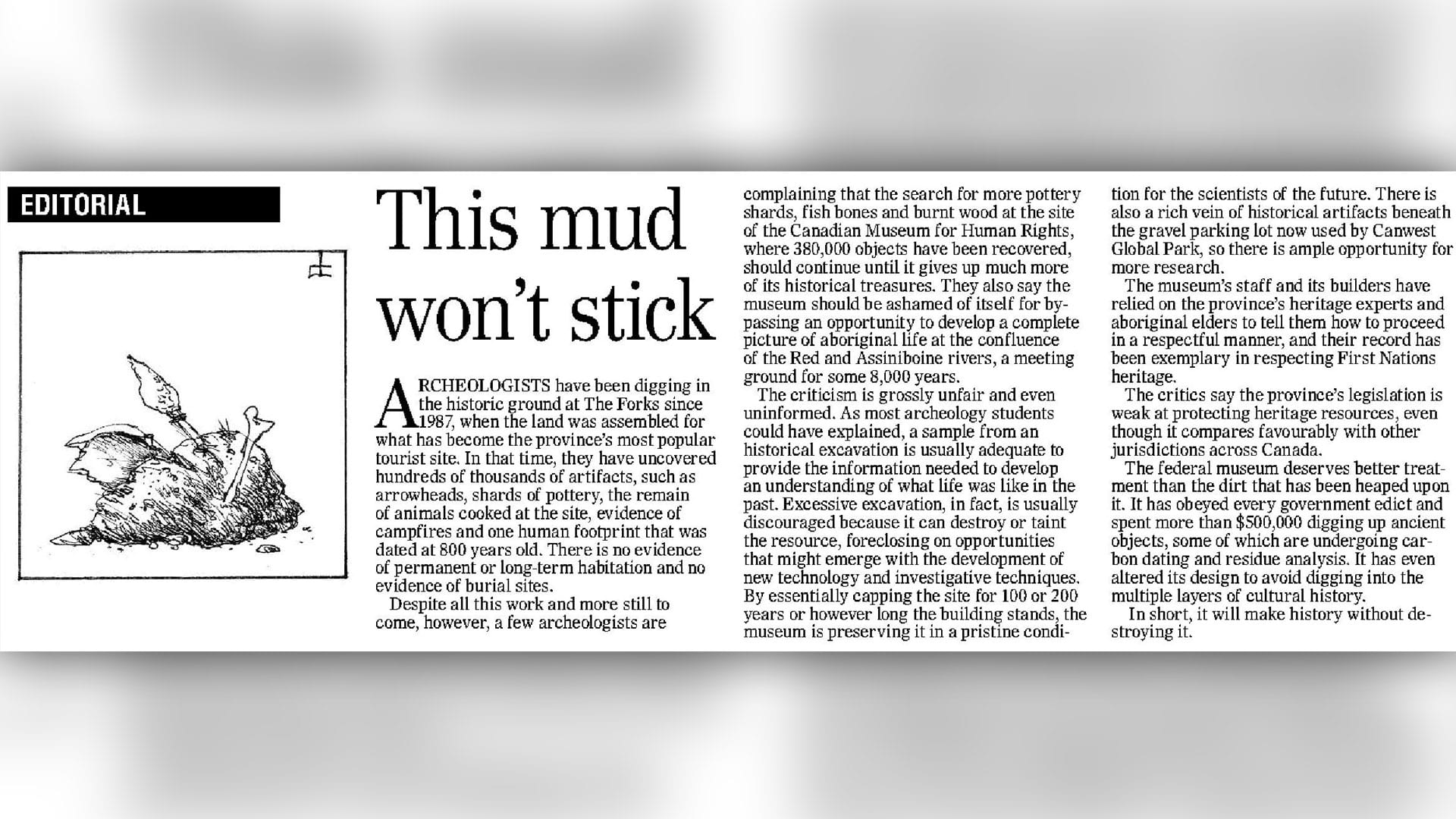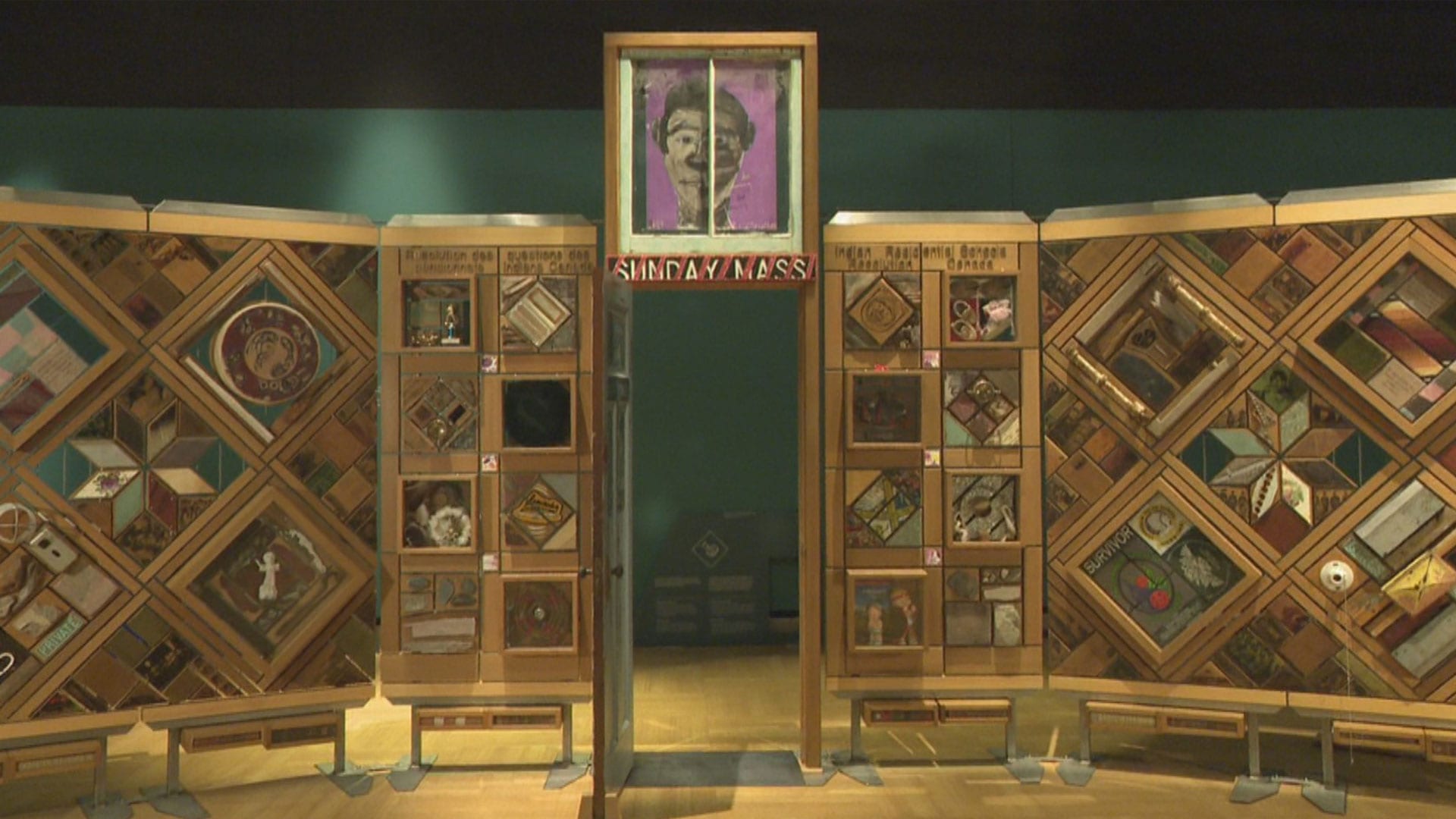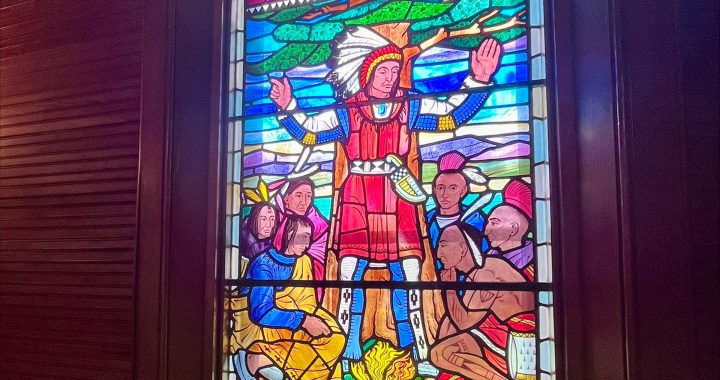It’s no secret that museum collections have benefitted from the colonization of countries occupied by imperial powers such as Britain and France.
But in recent years, spurred in part by the 2007 United Nations Declaration on the Rights of Indigenous Peoples (UNDRIP), there is a global push to decolonize museums.
And in Decolonizing Museums, Part 1, APTN Investigates takes a look at how that push is going in Canada – beginning with the Canadian Museum for Human Rights (CMHR).
APTN Investigates: Decolonizing Museums – Watch Part 2 here.
Karine Duhamel is Anishinabe and Metis – as well as being the curator for Indigenous content at the CMHR.
She came to the CMHR after the museum’s well-documented initial reluctance to label what happened to Indigenous people in this country as genocide, and the controversy surrounding that was part of the reason she decided to come aboard.
“It was something that I was really interested in because I think that there is room in institutions for change,” says Duhamel. “And I wouldn’t have come here if I didn’t really, really believe that.”

And the work Duhamel wants to do from the inside is decolonization.
“Decolonization and decolonizing museums in particular has to do with combating the erasure of colonization and of bringing forth Indigenous worldviews and perspectives because they have been under attack for so very long, for centuries,” says Duhamel.
And though the word “decolonization” does not appear in UNDRIP, Duhamel’s description of what decolonization means in a museum context is backed up in the UN declaration.
Article 15.1 of UNDRIP says that Indigenous peoples’ “cultures, traditions, histories and aspirations…shall be appropriately reflected in education and public information.”
Decolonization in a museum is also about eliminating the colonial lens that cultures other than European have tended to be viewed through in museums of the past.
So instead of offering an interpretation of Indigenous cultures, Duhamel says she focuses on letting cultures speak for themselves.
“I really see myself as a facilitator for the telling of stories, not as the storyteller myself,” she says. “It’s not my role and it’s not my right to tell stories about communities from which I don’t come or that I don’t have a connection to. And so for me, it’s always been really important first to identify people who want to share their stories, who have a really interesting story to tell, and then to work with those folks to make sure that we’re telling it in a way that represents their perspectives.”
As an example of how that works in practice, Duhamel talks about how she went about preparing an exhibit on the forced relocation of Ahiarmiut people.
In the 1950s and 60s the Ahiarmiut were relocated several times from their home near Ennadai Lake in present-day Nunavut. In 2019 the federal government apologized.
Duhamel says her approach was, in essence, to let the Ahiarmiut speak for themselves – working closely with community leader David Serkoak.
“David provided his own artifacts,” says Duhamel, “so we weren’t in a position to have to borrow from another institution where the provenance of that material might be kind of questionable or not right. David was also able to identify many people in the photographs that had never been identified before.”

But the CMHR has encountered public controversy a number of times since its inception.
According to Kevin Brownlee, curator of archaeology at the Manitoba Museum, the decision to limit an archaeological dig in 2008 at the site where the CMHR was built revealed a colonial bias against Indigenous history.
“They followed provincial guidelines when it comes to how much to excavate,” says Brownlee, “but, you know, what’s minimally required isn’t necessarily an adequate picture.”

Brownlee says the material found at the CMHR dig gave cause for more investigation than was ultimately allowed to happen.
“The number of hearths or cooking areas was huge,” says Brownlee. “You’re seeing lots of people activity in a fairly concentrated area. I think it speaks to the importance of the site overall. And anything that happens at the Forks, I mean, you certainly want to see more work done in excavations because this tells a really important history of that place.”
Brownlee points to a Winnipeg Free Press editorial from 2009 written in response to concerns being raised in the archaeology community about the short dig.

“The spin was this is, you know, fish bones and some broken pots. It’s not that important. They didn’t live here permanently. And somehow that is to make it less significant or less relevant,” says Brownlee.
The land around the fork of the Red and Assiniboine rivers – where the CMHR was built – is known to have been an ancient meeting place, and is believed to have hosted a peace treaty gathering around 700 years ago.
And ultimately Brownlee found the failure to do a proper archaeological investigation at the site hurtful enough that he has yet to set foot in the CMHR in spite of riding his bike past the building on a regular basis.
APTN asked CMHR CEO Isha Khan about the decision to limit the excavation work done – a decision that was made years prior to her being hired.
“I know that there was care taken at the time and there were Elders involved in ensuring that … but I think there’s a lot more that we have to do and much of that work, that healing is what we’ve started to do through ceremony here in the museum,” Khan says.
And indeed, an art installation which resides at the CMHR, comes with a contract which requires the museum and the artist who made it to share responsibility for the piece as well as strengthen their relationship on a regular basis through ceremony.
Carey Newman has roots in the Kwakwaka’wakw and Sto:lo nations, and he says the agreement concept he came up with to accompany his piece the Witness Blanket, is inspired by treaties.
“Rather than pitting one party against another in the way that Western contracts often do – where it’s about limitation of liability – by aligning ourselves together as sharing responsibility and placing all rights with the work itself, then we become the accountability,” says Newman. “And there are mechanisms in place to maintain that relationship over time, through sharing food together, through regular conversation.”

The Witness Blanket is 40 feet long and 10 feet high and is made of 886 objects, photographs, and documents collected from former residential schools across the country, attached to a wood frame.

The Witness Blanket is 40 feet long and 10 feet high and is made of 886 objects, photographs, and documents collected from former residential schools across the country, attached to a wood frame.
And according to the traditional way Newman thinks about the items that make up the blanket, each object is a witness to history.
“I think of it much the way that we think about our cultural objects in our Kwakwaka’wakw ways, much the way we think of our big houses as our ancestors, that that each of those pieces has a right to exist in the way it was meant to be,” says Newman. “And then collectively as a blanket, it has many stories to tell.”
And so Khan points to the Witness Blanket as being emblematic of the kind of relationship the CMHR wants to have with First Nations people.
“The Witness Blanket is this beautiful piece of truth,” says Khan. “We are the stewards of the blanket. The blanket is a collection of stories. And great care is taken in respecting those stories. But as stewards … we do it together in partnership. And I think that that is the essence of our relationship, with the first peoples of Canada. And we need to honor it. And it’s the model as to how we were supposed to work and that’s how we’re going to work.”












